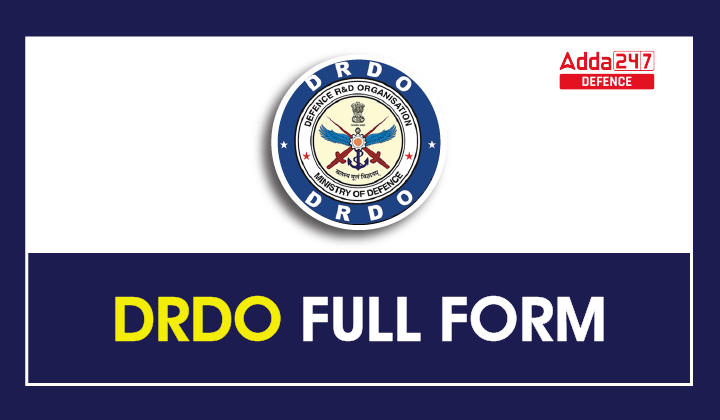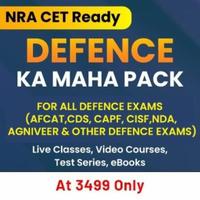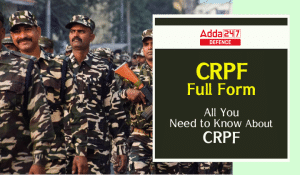DRDO Full Form
DRDO Full Form: The DRDO stands for Defence Research and Development Organization. Established in 1958 through the amalgamation of the Defense Science Organization (DSO), Technical Development Establishment, and the Directorate of Technical Development and Production, DRDO operates under the Ministry of Defence, Government of India. Headquartered in New Delhi, DRDO is responsible for spearheading research and development initiatives in defense. With over 5,000 researchers and approximately 25,000 scientific and support personnel, DRDO has achieved notable successes in various critical areas such as missile technology, light combat aircraft, radars, and electronic warfare systems.
DRDO Establishment
DRDO was established in 1958 with the aim of enhancing India’s self-reliance in defense technology and reducing dependence on foreign countries for military equipment. Its headquarters are in Delhi.
DRDO Mission
DRDO’s primary objective is to enhance self-reliance in Defense Systems through intensive research and development efforts.
- The organization focuses on designing and producing world-class weapons, tools, and devices that meet the quantity and quality standards specified by the Navy, Army, and Air Force.
- DRDO operates through an extensive network of laboratories dedicated to various aspects of military technology, including fighting vehicles, missiles, armaments, aeronautics, sensors, advanced computing and simulation, instrumentation, computer systems, special materials, training, naval systems, information systems, agriculture, and life sciences.
DRDO Achievements
DRDO has achieved significant milestones in defense technology development. Some notable achievements include the development of the Agni series of ballistic missiles, Prithvi missile systems, BrahMos supersonic cruise missile, Tejas fighter aircraft, Arjun main battle tank, and Akash surface-to-air missile system, among others.
DRDO collaborates with various Indian and international organizations, academic institutions, and industries to foster research and development partnerships. It works closely with the Indian Armed Forces and other defense organizations to address their specific technological needs.
DRDO actively promotes technology transfer to the Indian industry for commercialization and production of defense equipment. It aims to enhance the country’s defense manufacturing capabilities and encourage private sector participation in the defense sector.
DRDO Defence Production
In addition to research and development, DRDO also has a role in defense production. It undertakes the production of select defense equipment and systems through its production units, such as the Ordnance Factories and Bharat Electronics Limited (BEL). DRDO’s achievements in defense technology have gained international recognition. It has been responsible for significant contributions to India’s missile development program, which has positioned India as a leading missile power globally.
DRDO Leadership and Structure
DRDO is headed by a Chairman who is also the Secretary of the Department of Defense Research and Development in the Ministry of Defense, Government of India. The organization is divided into clusters, each headed by a Director General, focusing on specific technology domains.
DRDO – IGMDP (Integrated Missile Development Programme)
The Integrated Missile Development Programme (IGMDP) was a significant initiative undertaken by the Defense Research and Development Organization (DRDO) of India. It aimed at developing a range of indigenous missile systems to enhance India’s defense capabilities. This program was the brainchild of our beloved Missile Man Dr. APJ Abdul Kalam. The program was launched in 1983 and achieved notable success in developing various missile systems. Here are the key components of the IGMDP:
- Prithvi: Prithvi is a short-range surface-to-surface ballistic missile developed under the IGMDP. It has variants designed for both land and naval applications. The Prithvi missile system has the ability to carry both conventional and nuclear warheads and provides India with a strategic deterrence capability.
- Agni: The Agni series of ballistic missiles were developed as part of the IGMDP to provide India with intermediate to long-range nuclear-capable missiles. The Agni missiles are classified into different variants based on their range, including Agni-I, Agni-II, Agni-III, Agni-IV, and Agni-V. These missiles significantly enhance India’s strategic deterrence capabilities.
- Akash: Akash is a medium-range surface-to-air missile developed as part of the IGMDP. It is designed to intercept and destroy enemy aircraft and helicopters within a range of approximately 25 kilometers. The Akash missile system has been successfully deployed by the Indian Air Force and Indian Army.
- Nag: Nag is a third-generation fire-and-forget anti-tank guided missile developed under the IGMDP. It is designed to engage and destroy enemy armored vehicles. The Nag missile system is capable of operating both in day and night conditions and has been integrated with various platforms, including helicopters and ground-based launchers.
- Trishul: Trishul is a short-range, quick-reaction surface-to-air missile system that was also part of the IGMDP. However, its development faced several challenges, and the project was eventually closed without induction into the Indian Armed Forces.
DRDO plays a vital role in India’s defense preparedness by developing indigenous technologies and ensuring the country’s security requirements are met through cutting-edge defense systems and equipment.




 CISF Full Form, Know About History and F...
CISF Full Form, Know About History and F...
 CRPF Full Form, History, Roles and Respo...
CRPF Full Form, History, Roles and Respo...
 NCC Full Form, Know About History and Ai...
NCC Full Form, Know About History and Ai...












